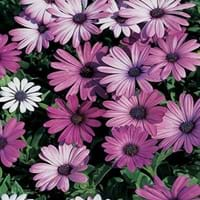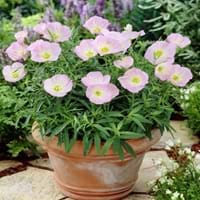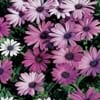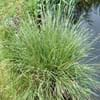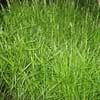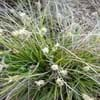Life Span
Annual and Perennial
Biennial
Type
Tender Perennial
Perennial
Origin
South Africa
Texas
Types
Osteospermum acanthospermum, Osteospermum amplectens, Osteospermum burttianum
Not available
Number of Varieties
Not Available
Habitat
Coastal Regions, Sandy areas, Terrestrial
Forests, meadows, Pastures, Prairies, savannahs, Woodland edges
USDA Hardiness Zone
10-11
8-10
AHS Heat Zone
Not Available
10-6
Sunset Zone
8, 9, 12, 13, 14, 15, 16, 17, 18, 19, 20, 21, 22, 23, 24
H1, 8, 9, 12, 13, 14, 15, 16, 17, 18, 19, 20, 21, 22, 23, 24
Habit
Clump-Forming
Upright/Erect
Flower Color
White, Purple, Blue Violet
White, Lemon yellow, Light Pink
Flower Color Modifier
Bicolor
Bicolor
Fruit Color
Not Available
Tan
Leaf Color in Spring
Green
Green
Leaf Color in Summer
Green
Green
Leaf Color in Fall
Green, Blue Green
Not Available
Leaf Color in Winter
Light Green
Light Green
Leaf Shape
Irregular
Alternate
Plant Season
Spring, Summer, Fall
Spring, Summer
Sunlight
Full Sun, Partial Sun
Full Sun, Partial Sun
Type of Soil
Loam
Loam, Sand
The pH of Soil
Neutral
Neutral, Alkaline
Soil Drainage
Well drained
Well drained
Bloom Time
Late Spring, Early Summer, Summer, Late Summer, Early Fall, Fall
Early Spring, Spring, Late Spring, Early Summer, Late Winter
Tolerances
Drought
Drought
Where to Plant?
Container
Container, Ground, Pot
How to Plant?
Seedlings, Stem Cutting
Seedlings
Plant Maintenance
Medium
Medium
Watering Requirements
Do Not over Water, Keep ground moist
Average Water Needs, Do Not over Water, Keep the Soil well drained, Requires regular watering
In Summer
Lots of watering
Lots of watering
In Spring
Moderate
Moderate
In Winter
Average Water
Average Water
Soil pH
Neutral
Neutral, Alkaline
Soil Type
Loam
Loam, Sand
Soil Drainage Capacity
Well drained
Well drained
Sun Exposure
Full Sun, Partial Sun
Full Sun, Partial Sun
Pruning
Remove damaged leaves, Remove dead branches, Remove dead leaves
Remove damaged leaves, Remove dead branches, Remove dead leaves
Fertilizers
All-Purpose Liquid Fertilizer
All-Purpose Liquid Fertilizer
Pests and Diseases
Red blotch
Pests and diseases free, Red blotch
Plant Tolerance
Drought
Drought
Flower Petal Number
Single
Single
Foliage Texture
Medium
Medium
Foliage Sheen
Not Available
Matte
Attracts
Bees, Birds, Butterflies
Bugs, Butterflies, Insects
Allergy
Not Available
Abdominal pain, Anxiety, Inflammation, Low blood pressure
Aesthetic Uses
Beautification, Showy Purposes
Beautification, Decorating walls, Hanging Basket, Showy Purposes, Used as an interior landscaping species, Used for decorating walls, fences, gates, hedges, etc.
Beauty Benefits
Not Available
Skin irritation, Skin Problems
Environmental Uses
Air purification
Air purification
Medicinal Uses
Not Applicable
Eczema, Menstrual Cramps, Menstrual Disorders
Part of Plant Used
Flowers
Flowers, Root, Seeds, Stem
Other Uses
Used as Ornamental plant
Beneficial species for attracting pollinators, deer resistant, Edible seed
Used As Indoor Plant
No
Yes
Used As Outdoor Plant
Yes
Yes
Garden Design
Bedding Plant, Container, Cutflower, Foundation, Groundcover, Hanging Basket, Mixed Border, Rock Garden / Wall
Mixed Border, Rock Garden, Wall, Wildflower
Botanical Name
OSTEOSPERMUM fruticosum
OENOTHERA mexicana
Common Name
Shrubby Daisybush, Trailing African Daisy
pinkladies, pink evening primrose, showy evening primrose, Mexican primrose, and amapola.
In Hindi
Blue Eyed Daisy Plant
Mexican primrose
In German
Blue Eyed Daisy Pflanze
Rosa Nachtkerze
In French
Blue Eyed Daisy Plante
Mexican primrose
In Spanish
Planta observada azul de la margarita
Primrose mexicana
In Greek
Μπλε Eyed Daisy Φυτών
Μεξικού Primrose
In Portuguese
Planta da margarida de olhos azuis
Mexican Primrose
In Polish
Blue Eyed Daisy roślin
Mexican Primrose
In Latin
Daisy Blue Eyed Planta
Mexicanus Primrose
Phylum
Magnoliophyta
Tracheophyta
Class
Magnoliopsida
Magnoliopsida
Family
Asteraceae
Onagraceae
Genus
Osteospermum
Oenothera
Clade
Angiosperms, Asterids, Eudicots
Angiosperms, Eudicots, Rosids
Tribe
Calenduleae
Onagreae
Subfamily
Asteroideae
Onagroideae
Season and Care of Blue Eyed Daisy Plant and Mexican primrose
Season and care of Blue Eyed Daisy Plant and Mexican primrose is important to know. While considering everything about Blue Eyed Daisy Plant and Mexican primrose Care, growing season is an essential factor. Blue Eyed Daisy Plant season is Spring, Summer and Fall and Mexican primrose season is Spring, Summer and Fall. The type of soil for Blue Eyed Daisy Plant is Loam and for Mexican primrose is Loam, Sand while the PH of soil for Blue Eyed Daisy Plant is Neutral and for Mexican primrose is Neutral, Alkaline.
Blue Eyed Daisy Plant and Mexican primrose Physical Information
Blue Eyed Daisy Plant and Mexican primrose physical information is very important for comparison. Blue Eyed Daisy Plant height is 36.00 cm and width 51.00 cm whereas Mexican primrose height is 15.20 cm and width 25.40 cm. The color specification of Blue Eyed Daisy Plant and Mexican primrose are as follows:
Blue Eyed Daisy Plant flower color: White, Purple and Blue Violet
Blue Eyed Daisy Plant leaf color: Green
Mexican primrose flower color: White, Lemon yellow and Light Pink
- Mexican primrose leaf color: Green
Care of Blue Eyed Daisy Plant and Mexican primrose
Care of Blue Eyed Daisy Plant and Mexican primrose include pruning, fertilizers, watering etc. Blue Eyed Daisy Plant pruning is done Remove damaged leaves, Remove dead branches and Remove dead leaves and Mexican primrose pruning is done Remove damaged leaves, Remove dead branches and Remove dead leaves. In summer Blue Eyed Daisy Plant needs Lots of watering and in winter, it needs Average Water. Whereas, in summer Mexican primrose needs Lots of watering and in winter, it needs Average Water.
